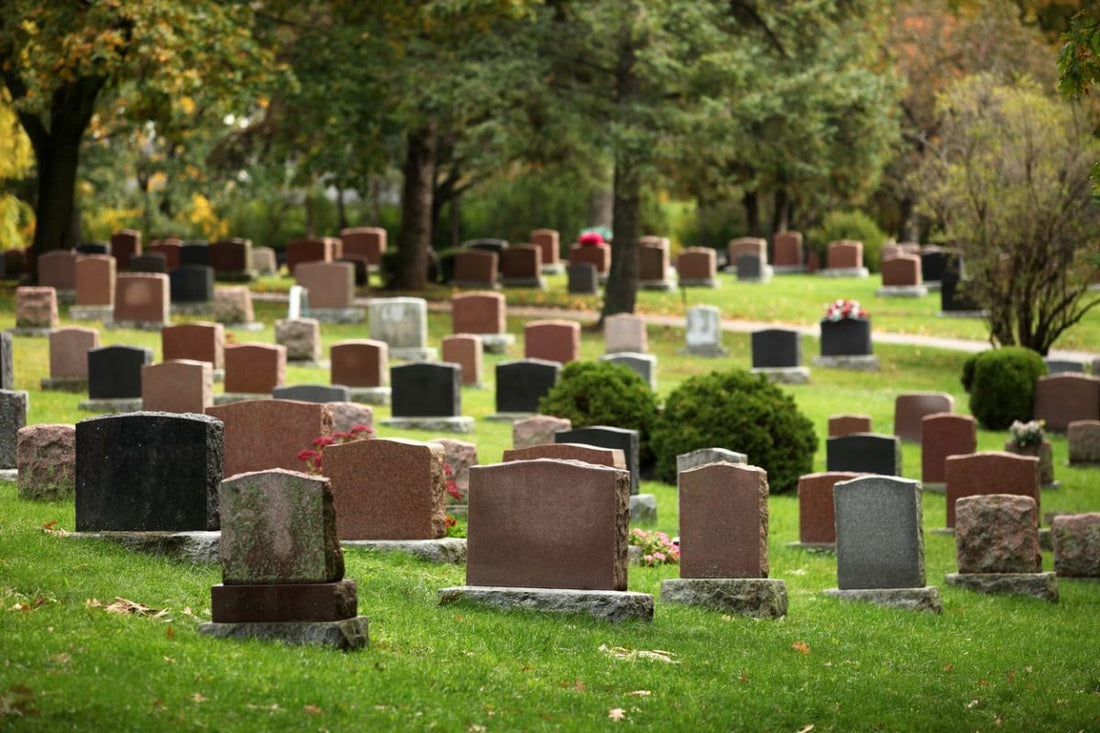Cemetery OSHA Trenching & Excavation Safety Requirements

Share
Cemetery OSHA Trenching and Excavation Safety Requirements
Trench collapses, or cave-ins, pose the greatest risk to workers’ lives. When done safely, trenching operations can reduce worker exposure to other potential hazards including falls, falling loads, hazardous atmospheres, and incidents involving mobile equipment. OSHA standards require that employers provide workplaces free of recognized hazards. The employer must comply with the trenching and excavation requirements of 29 CFR 1926.651 and 1926.652 or comparable OSHA-approved state plan requirements.
Trench Safety Measures
Trenches 5 feet (1.5 meters) deep or greater require a protective system unless the excavation is made entirely in stable rock. If less than 5 feet deep, a competent person may determine that a protective system is not required.
Trenches 20 feet (6.1 meters) deep or greater require that the protective system be designed by a registered professional engineer or be based on tabulated data prepared and/or approved by a registered professional engineer in accordance with 1926.652(b) and (c).
Competent Person
OSHA standards require, before any worker entry, that employers have a competent person inspect trenches daily and as conditions change to ensure elimination of excavation hazards. A competent person is an individual who is capable of identifying existing and predictable hazards or working conditions that are hazardous, unsanitary, or dangerous to workers, soil types and protective systems required, and who is authorized to take prompt corrective measures to eliminate these hazards and conditions.
Gravesite Access and Egress
- Keep heavy equipment away from trench edges.
- Identify other sources that might affect trench stability.
- Keep excavated soil (spoils) and other materials at least 2 feet (0.6 meters) from trench edges.
- Know where underground utilities are located before digging.
- Test for atmospheric hazards such as low oxygen, hazardous fumes and toxic gases when > 4 feet deep.
- Inspect trenches at the start of each shift.
- Inspect trenches following a rainstorm or other water intrusion.
- Do not work under suspended or raised loads and materials.
- Inspect trenches after any occurrence that could have changed conditions in the trench.
- Ensure that personnel wear high visibility or other suitable clothing when exposed to vehicular traffic.
Gravesite Protective Systems
There are different types of protective systems.
Benching means a method of protecting workers from cave-ins by excavating the sides of an excavation to form one or a series of horizontal levels or steps, usually with vertical or near vertical surfaces between levels. Benching cannot be done in Type C soil.
Sloping involves cutting back the trench wall at an angle inclined away from the excavation.
Shoring requires installing aluminum hydraulic or other types of supports to prevent soil movement and cave-ins.
Shielding protects workers by using trench boxes or other types of supports to prevent soil cave-ins. Designing a protective system can be complex because you must consider many factors: soil classification, depth of cut, water FactSheet content of soil, changes caused by weather or climate, surcharge loads (e.g., spoil, other materials to be used in the trench) and other operations in the vicinity.
Additional Information Visit OSHA’s Safety and Health Topics webpage on trenching and excavation at www.osha.gov/trenching.
Workers’ Rights Workers have the right to:
- Working conditions that do not pose a risk of serious harm. Receive information and training (in a language and vocabulary the worker understands) about workplace hazards, methods to prevent them, and the OSHA standards that apply to their workplace.
- Review records of work-related injuries and illnesses.
- File a complaint asking OSHA to inspect their workplace if they believe there is a serious hazard or that their employer is not following OSHA’s rules. OSHA will keep all identities confidential.
- Exercise their rights under the law without retaliation, including reporting an injury or raising health and safety concerns with their employer or OSHA. If a worker has been retaliated against for using their rights, they must file a complaint with OSHA as soon as possible, but no later than 30 days.
About Certified Safety Training for Cemeteries
Certified Safety Training (CST) is the leader in cemetery OSHA compliance. Backed by more than 30 years of industry experience and Certified Safety Professionals, CST matches industry expertise with customizable, award-winning programming to make sure that customers have the highest-quality safety programs, plans, training, and advice.
Hear What Our Customers Have to Say
Download Our Checklist
